Poverty is a State of Multiple Deprivations, not just an Income Problem
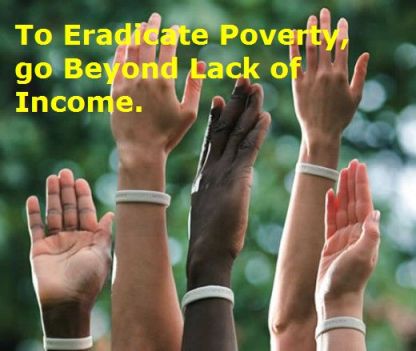
Poverty can’t be understood in Monetary terms alone.
Poverty is a state of multidimensional deprivations, including income. If the state of well-being implies comforts, lack of well-being (shall we say ill-being) characterizes the state of human suffering – called poverty. The poor live in a state of continuous discomforts, agony and insecurity due to a variety of deprivations – food, clothing, shelter, health and education, social exclusion, and so on. The suffering can vary from mild to extreme when the poor are simply battling for survival. They are in a state of chronic hunger and under-nutrition and are at the risk of losing their lives.
People, particularly in the South Asia and the sub-Saharan Africa, know what it means to live with chronic hunger, under nutrition and malnutrition. United Nations’ 8 Millennium Development Goals (MDGs) aim to curtail the state of extreme deprivations still widespread in, what the so-called “developed world” used to call, the “third World”. South Asia and the sub-Saharan Africa are currently the biggest pockets of world poverty and hunger in the world.
What makes the poor so helpless that they are forced to live in deprivations?
The answer is simple: lack of capabilities and freedom, according to 1998 Nobel laureate Amartya Sen’s theory of development and poverty.
Poverty is Deprivation of Capabilities
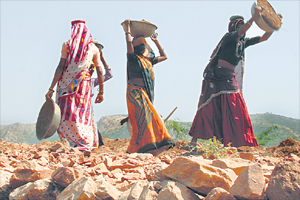
Why are we poor?
Amartya Sen sees every person endowed with a certain set of capabilities. It is simply a matter of realizing these capabilities that will enable people to raise their standards of living, and escape poverty. Thus, human poverty is nothing but a state of capability deprivation. It also shows up as “lack of being able (incapability) to earn sufficient income.”
What people are “capable” of becoming or doing (achieving) is influenced by many factors: economic opportunities; political liberties and social powers; health conditions and access to medical facilities; access to education and level of skill development; mental and emotional framework; and levels of motivation, encouragement and initiative. It is clear that people’s capabilities are influenced by psychological, social, and political aspects. Now environmental factors are also emerging as another aspect that can’t be ignored, resulting from global warming and climate change issues.
In this light, poverty at the most basic level, is a deprivation of human capabilities. Expanding capabilities increase well being and shrinking capabilities decrease well being. The set of capabilities required to escape poverty include basic capabilities as to have enough food, to be sheltered, to be clothed, to have good health and education, etc.
If in today’s world of sheer abundance people are living in poverty, they are living in a state of capability deprivations coming from lack of freedom. This approach also recognizes the presence of poverty in the economically rich countries, again in terms of deprivation of capabilities.
Human Capabilities
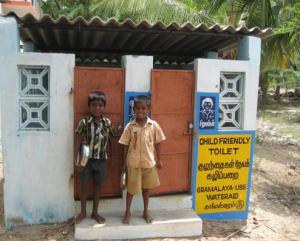 Amartya Sen’s arguments revolve around increasing people’s capabilities so that they can enhance their well-being and escape from poverty. What are these capabilities? Consider a commodity such as a bicycle which has the characteristic of movement or transportation. Having a bicycle gives a person the capability of movement in a certain way, not possible without it. However, mere possession of the bicycle does not ensure such a capability, say if say the person is handicapped or does not uses it for whatever reason. But using the bicycle gives him the ability to do various things which will reflect in the standard of living. It is immaterial how he got the bicycle; it could have come from his own funds or gifted in some public welfare scheme. Similar arguments apply for any other item or a facility; say a computer and an Internet connection. If a person uses them, he becomes capable of doing things not possible in their absence.
Amartya Sen’s arguments revolve around increasing people’s capabilities so that they can enhance their well-being and escape from poverty. What are these capabilities? Consider a commodity such as a bicycle which has the characteristic of movement or transportation. Having a bicycle gives a person the capability of movement in a certain way, not possible without it. However, mere possession of the bicycle does not ensure such a capability, say if say the person is handicapped or does not uses it for whatever reason. But using the bicycle gives him the ability to do various things which will reflect in the standard of living. It is immaterial how he got the bicycle; it could have come from his own funds or gifted in some public welfare scheme. Similar arguments apply for any other item or a facility; say a computer and an Internet connection. If a person uses them, he becomes capable of doing things not possible in their absence.
Apart from physical resources there are other things that affect capabilities. Discrimination is a ubiquitous problem that excludes the poor from society’s activities and processes. This social exclusion reduces people’s capabilities that can lead to or sustain poverty. In societies with high gender bias women are at disadvantage; their freedom to move and participate in social activities is badly curtailed. It results in their loss of capabilities, making them more susceptible to poverty. Other examples are found in the racial discrimination of African Americans and Hispanics in the US or of the lowest caste people in India. As a result, poverty in these groups is higher than the society average.
Age is another factor that becomes important for the elderly. They need more frequent medical attention and resource support to maintain their health and mobility; when denied they begin to experience loss of capabilities. This makes them vulnerable to poverty.
The poor can’t afford education and medical services on their own; having access to state facilities enhance their capabilities. Similarly, if the hurdles to their economic, social and political participation are removed they become more capable to take care of themselves.
Need to Rethink “Development”
Sen’s idea of capabilities can’t be properly understood without first revisiting the concept of “development”. Today when people talk of progress or development they are merely talking of “economic development” which simply means expansion of the economy in terms of GDP growth. People play the role of producer of goods and services and also the end consumers. It is basically a production/consumption oriented progress – produce more and consume more, and call yourself developed. People are supposed to be more “developed” if they consume more. [Isn't it funny?] The standard of living is seen in the context of consumption of goods and resources – it is input driven. Everything is seen in the context of resources measured in money terms.
While standard of living is certainly important because it provides material well-being, people’s well-being has many other dimensions apart from economic – after all they are psychological, social and political beings. Therefore, the primary focus of development should be people as human beings, not mere the economy. It means shifting from the resource driven “economic development” to end-result (well-being) focused “human development”.
In this broader framework, Amartya Sen’s human capabilities approach offers a more fundamental measure of progress and development, and also of poverty.
Development is Enhancing People’s Freedom
Sen proposes that people lose capabilities when they lack freedom. Having freedom provides the space to develop capabilities. Therefore, all development, according to Sen, is development of human capabilities in the enabling environment of freedom.
Sen proposes that expansion of individual freedom is the goal of development; freedom is also the principal means of development. In this context, poverty is a state where people’s freedom is badly constrained which results in their loss of capabilities. Therefore, development also means removing the major sources of “lack of freedom” such as the poverty; all forms of discriminations – racial, religious, gender or community based; neglected public facilities and poor infrastructure; lack of economic opportunities; social exclusion and political marginalization; and policies limiting human rights; and so on. In many societies where there is ethnic tension, we can surely include “the fear of violence or terror attacks.”
Freedom provides the necessary space to acquire capabilities and use them to make one’s life better the way one wanted. It is particularly relevant for the poor for its enabling and empowering impact.
Interestingly, the tiny Himalayan kingdom Bhutan follows a holistic approach to development that is attracting worldwide attention. Bhutan follows the principle of “gross national happiness‘ which includes several aspects of life such spirituality, culture, good governance and environment apart from economic well-being. This is perhaps the best model of sustainable development – given the looming climatic crisis around the world. India should consider it rather than habitually looking at the west for guidance.
Income Poverty Vs Capability Poverty
The traditional income poverty and Sen’s capabilities poverty are not entirely distinct from each other. In general, increasing income improves the capabilities of people and vice versa. Basic essentials like education and health directly improve the quality of life and capabilities; they also improve the ability to earn more. Factors like age, gender, social roles, location, etc do affect the relationship.
The issue of unemployment offers an insightful comparison between income and capability poverty approaches. If unemployment only meant loss of income, it could be compensated by some form of income support (say, unemployment allowance), but in reality lack or loss of job has much deeper impact on a people’s life than mere economic loss. It might include psychological damage, loss of motivation and self confidence, stress, depression, increase in ailments and morbidity, etc. The income poverty approach is blind towards such “human sufferings” which are clearly picked up by the capability approach through their adverse impact on the capabilities.
Conversion of income into capabilities is an important issue, particularly for the poor. For example, alcoholism is widespread in some poor communities and if the income earner habitually spends it on drinking he is doing nothing to improve his or family’s capabilities. On the contrary, he might be degrading his capabilities. A better use would be to raise the nutrition level of family members (but that needs awareness and information, which the poor often lack).
Similarly there are other situations where good income does not automatically ensure better capabilities. For example, in the discriminated sections of society, say for instance, the lowest caste community in India even good enough income does not automatically ensures social or political equality. In such cases, belonging to a discriminated community becomes a disability (and a cause for reduced freedom).
Gender inequality is another hurdle when the income distribution within families is considered. In patriarchal societies male members always have the first right, leaving the females members rather deprived in everything. This deprivation ultimately shows up in the data for mortality rates, morbidity, literacy, undernourishment, medical-neglect, etc.
Poverty Reduction involves more than Economic Growth
The fact that higher economic growth does not automatically translate into lower poverty, is clearly observed in the development status of different provinces of India. There is a unique state in the southern part, Kerala, which has achieved faster reduction in income poverty despite rather moderate economic growth. It relied on the expansion of basic education, healthcare facilities and equitable land distribution to counter poverty. In comparison, the northern state of Punjab focused on economic growth and became prosperous, but also has higher poverty.
Likewise, though the economic reforms in India have opened up the economy throwing new opportunities but the social backwardness did not allow majority of Indians join the growth story. The support structure of high literacy level, quality basic education, good healthcare facilities, etc proved simply far too inadequate.
Conclusion
The message is clear: Anti-poverty programs must not focus on reduction of income poverty alone. Enhancement of human capabilities must also go hand in hand with the economic growth for it to be sustainable. The capability approach is more fundamental and comprehensive in nature as it shifts the focus from the means (resources) to the ends (human well-being), by putting the people in the center.
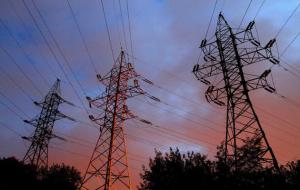
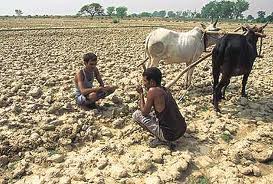
No comments:
Post a Comment